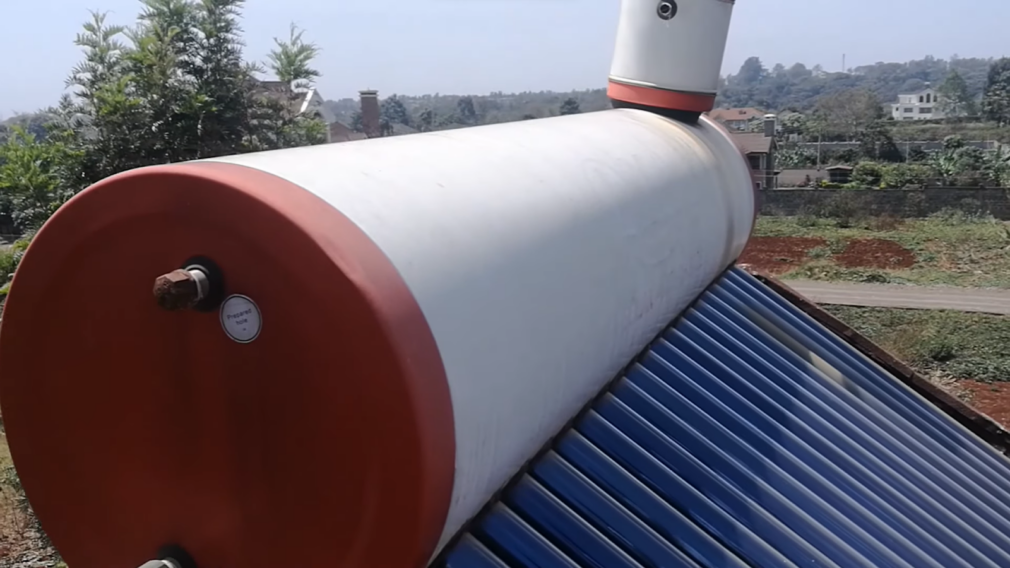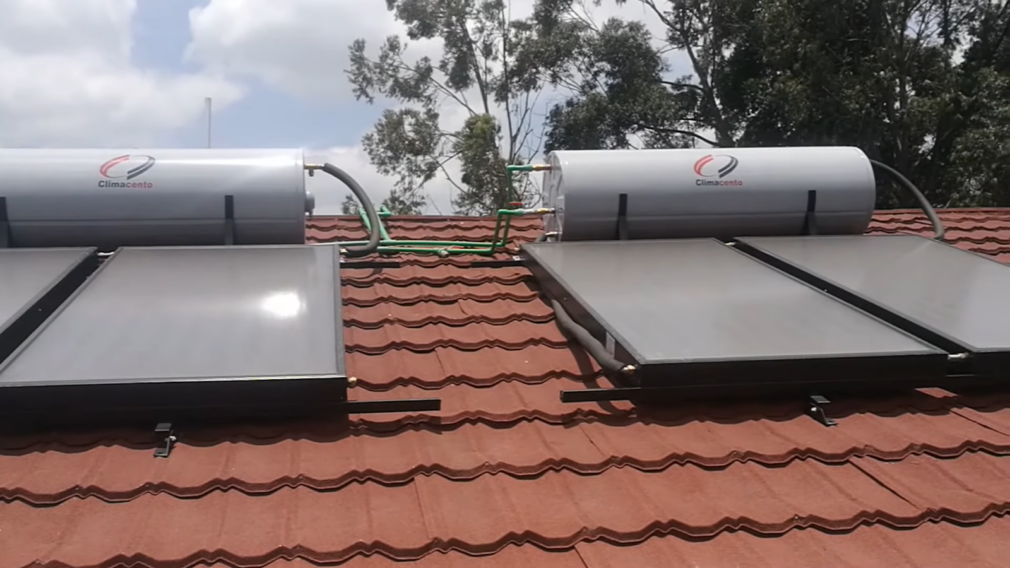The Ins and Outs of Passive Solar Hot Water Systems
In today’s world, the transition to renewable energy sources is a prevalent topic. By embracing solar energy and minimizing fossil fuel usage, you can actively contribute to environmental conservation. Opting for a solar water heating system stands out as a commendable choice for numerous reasons.
This piece delves into the promising future of solar water heating systems. Such heaters not only represent a commitment to sustainability but also offer economic benefits, longevity, and low maintenance.
By integrating a solar water heating system, you can significantly reduce your hot water expenses and contribute to decreasing pollution levels. While many households traditionally rely on electric or gas heaters, these often burn fossil fuels, releasing greenhouse gases detrimental to our climate.
We will explore the two primary categories of solar hot water systems: active and passive. The spotlight will be on the more efficient variant, the passive solar water heating system, providing an in-depth analysis of its various types.
Table of Contents:
- Understanding Passive Solar Water Heating Methods:
- A Wise Financial Decision;
- Passive Solar Water Heating Systems:
- Glazed Flat Plate Collectors;
- Unglazed Flat Plate Collectors;
- Evacuated Tube Collectors;
- Batch Solar Heaters.
- Benefits of Passive Solar Water Heating Systems;
- Advantages of Opting for Solar Solutions as Consumers:
- Expanding Opportunities for Solar Contractors;
- Comparing Active and Passive Solar Water Heating Systems:
- Active Solar Water Heating Systems;
- Passive Solar Water Heating Systems.
- FAQ;
- Conclusion.
Understanding Passive Solar Water Heating Methods
Domestic passive solar water heaters leverage the sun’s radiant energy to warm the water stored in their reservoirs. These systems distinguish themselves by their efficiency, as they heat water circulating through the collector tubes without the need for supplementary energy sources.
A Wise Financial Decision
At first glance, the upfront cost of a passive solar hot water system might appear steep. However, considering their straightforward installation process and minimal maintenance requirements, it becomes clear that it’s a sound investment. With the potential to efficiently serve for over two decades, given appropriate care, solar water heating systems indeed offer long-term value.
Passive Solar Water Heating Systems
Passive solar water heating systems come in a variety of designs, each tailored to specific needs and offering its own set of advantages and considerations.
1. Glazed Flat Plate Collectors
Housed in a durable, insulated metal enclosure, these systems feature a dark absorber plate situated beneath one or more protective glass or plastic layers. When sunlight strikes the absorber, it warms the water in the heating tubes, which then circulates to a storage tank.
2. Unglazed Flat Plate Collectors
Functionally similar to their glazed counterparts, unglazed systems have a slightly reduced heating capacity. Owing to this, they’re often the preferred choice for applications like swimming pools or vehicle wash facilities where extremely hot water isn’t a necessity.
3. Evacuated Tube Collectors
Comprising of glass tubes with an insulating vacuum barrier, these systems are known for their high efficiency. Sunlight warms the water within the inner tube via thermal energy, enabling the system to achieve temperatures ranging from 77 °C to 177 °C, making it particularly effective in various applications.
4. Batch Solar Heaters
Also recognized as Integral Collector Storage Systems, batch heaters involve one or multiple tanks designed to capture and store sunlight. As the sun shines upon them, the water within absorbs this solar energy, raising its temperature. A prime advantage is their cost-effectiveness, as they typically require no auxiliary components apart from the tanks. However, their efficiency can be influenced by the local climate; in colder regions, for example, their performance may decline during winter months.
Benefits of Passive Solar Water Heating Systems

Harnessing sunlight, passive solar water heaters operate without the need for additional energy sources, eliminating reliance on costly fuels. This directly translates to reduced installation expenses. However, the advantages of these systems are manifold. Let’s delve into the myriad benefits they offer:
Advantages of Opting for Solar Solutions as Consumers
| Advantages of Passive Solar Water Heaters | Benefits |
|---|---|
| Eco-Friendly Choice | Embracing passive solar systems aligns with conscious environmental stewardship, playing a direct role in pollution reduction and eco-preservation. |
| Consistent Hot Water Supply | With no dependency on external heating mechanisms, these systems promise uninterrupted hot water, even in regions prone to power outages. |
| Economic Efficiency | Tapping into solar energy negates the influence of fluctuating fuel prices, making it a financially prudent choice. |
| Minimal Maintenance | The absence of intricate electrical or mechanical components means reduced maintenance, ensuring longevity and hassle-free usage. |
| Hassle-Free Installation | Retrofitting these systems into existing setups is straightforward. Coupled with potential tax breaks and government incentives, users often recover their initial investment in a short span, enjoying the dividends for years thereafter. |
Expanding Opportunities for Solar Contractors
For contractors, integrating passive solar water heating solutions can foster enriched interactions and trust with clients. These systems, being independent of conventional energy grids and embodying simplicity, enable consumers to easily grasp both their upfront costs and the enduring value they offer.
The inherent design of passive solar systems eschews the need for specialized or proprietary equipment. This not only simplifies procurement and inventory management but also optimizes storage needs, leading to tangible savings in operational overheads.
Such cost efficiencies, when combined with potential financial incentives available at both local and federal levels, create a conducive environment for business expansion. Contractors are in a unique position to not only benefit from these savings but also extend these advantages to their clientele, enhancing their market appeal and solidifying long-term business relationships.
Comparing Active and Passive Solar Water Heating Systems
When considering solar water heating options, it’s essential to grasp the distinctions between active and passive systems. Though both are prevalent, passive solar water heaters often stand out due to their efficiency and operational benefits. Dive in to explore the nuances of each system and discover why the passive approach often emerges as the preferred choice.
Active Solar Water Heating Systems
Active solar water heating systems, by design, employ a more intricate approach compared to their passive counterparts. Central to their functionality are pumps, which facilitate the circulation of fluid through collectors where the essential heat absorption transpires.
Distinguishing between the two primary variants of active systems hinges on the manner of water circulation and the interaction between collectors and storage tanks:
- Direct Circulation Systems: In these setups, household water circulates directly through the collectors and into storage tanks. They are apt for regions with milder climates, where extreme temperatures don’t pose significant challenges to the system’s efficiency or the integrity of the components;
- Indirect Circulation Systems: Tailored for locations with colder conditions where freezing is a legitimate concern, these systems employ a heat transfer fluid that doesn’t freeze. This fluid gathers heat from the collectors and subsequently transfers it to the household water in the storage tanks, ensuring a seamless heating process even when external temperatures plummet.
Passive Solar Water Heating Systems

Passive solar water heaters, by design, prioritize simplicity and affordability. Foregoing the intricate components often associated with active systems, passive variants offer cost-effective alternatives for those looking to harness solar energy for their heating needs. Central to their operation is the reliance on natural phenomena such as gravity and convection, eschewing the need for external pumps.
The mechanics of passive systems are rooted in two principal configurations: the integral storage system and the thermosyphon system. What sets them apart from active counterparts is the absence of components like pumps, thermostats, sensors, and other mechanical parts. This not only curtails initial installation costs but also minimizes long-term maintenance and operational expenses. The upshot? A system that’s both affordable to set up and economical to maintain.
Considering Special Offers?
Taking the plunge into the world of passive solar hot water systems is a significant decision, one that promises long-term benefits. To maximize your investment, seeking the right expertise is paramount. We recommend reaching out to Everything Solar, a trusted name in the solar industry, to cater to all your heating essentials.
FAQ
A passive solar water heating system harnesses the sun’s heat directly to provide warm water for your household. This energy-efficient solution operates solely on the principles of gravity and convection, eliminating the need for additional energy sources.
Solar water heaters, a sustainable heating option, come in two main types: active and passive. Each approach offers its unique advantages and disadvantages. Passive solar heaters rely on direct sun exposure to heat water, while active solar water heating systems incorporate supplementary equipment like pumps, sensors, and controllers to facilitate the heating process.
A passive solar water heater combines traditional techniques with modern engineering for efficient heating. In this system, the water in need of heating flows through collectors designed to directly absorb solar heat. Leveraging the principle that hot air rises, this system collects the heated air and channels it into the water tank, contributing to the warming process.
Solar water heaters can function as both active and passive systems. However, passive heating systems prove more budget-friendly as they do not rely on additional energy sources. Passive solar water heating systems encompass options like Integrated Collector Storage (ICS) systems and thermosyphon systems.
A passive solar water heating system harnesses direct sunlight to provide warm water for your household. This cost-effective heating solution operates independently, relying solely on gravity and convection for its functionality.
Solar water heaters, a renewable heating option, come in two primary configurations: passive and active. Each variant offers its unique advantages and disadvantages. Passive solar heaters directly utilize sunlight to heat water, offering a more straightforward approach. In contrast, active solar water heating systems involve additional components such as pumps, sensors, controllers, and more, enhancing their complexity and capabilities.
A passive solar water heater is a traditional concept rejuvenated by modern engineering for efficient heating. In this system, water in need of heating flows through collectors that directly absorb solar heat. This process leverages the principle of hot air rising, allowing the heated air to be channeled into the water tank.
Solar water heaters can operate as both passive and active systems. However, passive heating systems are notably cost-effective as they do not rely on supplementary energy sources. Passive solar water heating systems can take the form of Integrated Collector-Storage (ICS) systems or thermosyphon systems.
Conclusion
In summary, passive solar water heating systems offer a cost-effective, eco-friendly, and reliable solution for households. They reduce expenses, contribute to environmental conservation, and eliminate the dependency on costly fuels. The simplicity of passive systems results in straightforward installation, minimal maintenance, and long-term value. Compared to active systems, passive solar water heaters often stand out as a preferred choice due to their efficiency and operational benefits. Embracing passive solar water heating is a wise and sustainable decision.








